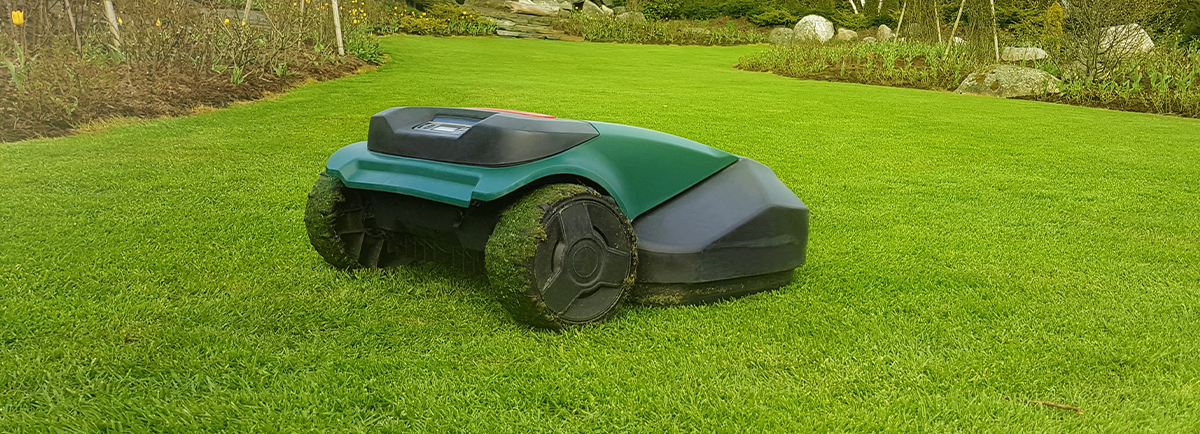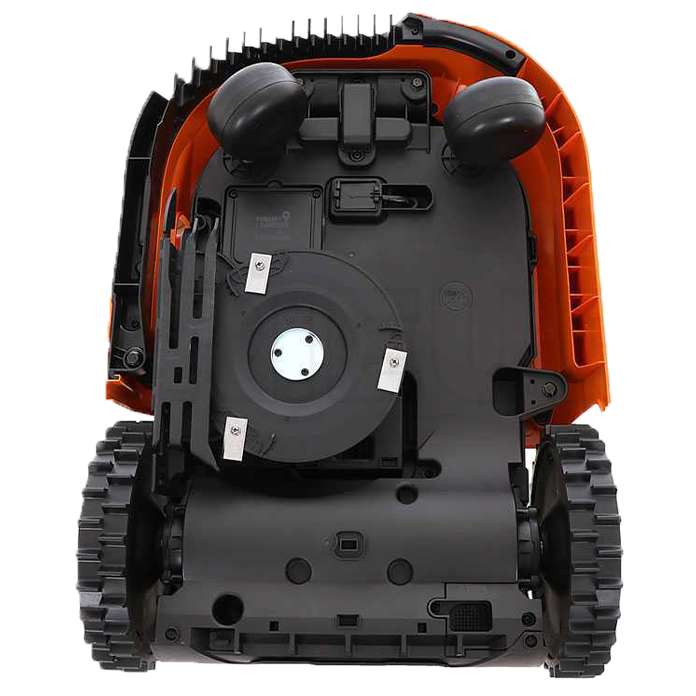The Complete Guide to help you choose the Best Robot Lawn Mower
by the Real Experts of Gardening Equipment
WHY SHOULD YOU SWITCH TO A ROBOT LAWN MOWER? If you are a garden lover, you will surely have asked yourself this question, perhaps even browsed among the products for lawn mowing and maintenance looking for a way to save time without missing out on a well-groomed garden. The purpose of this purchasing guide is to clarify the doubts normally associated to a new technology in order to have a clear understanding of the functionality and use of robot lawn mowers.
CONTENTS
1. The main characteristics of robot lawn mower
In the field of gardening and lawn care and maintenance, robot lawn mowers represent a powerhouse of technology, the ideal choice for those with a fairly even lawn without too many obstacles. The purchase of a robot lawn mower is similar to the purchase of a car, where the added hi-tech features play an increasingly important role; in a similar way, a robot lawn mower is a product that can be customised and adapted to your needs.
First of all, let’s look at the features and benefits of these robots; the first question that comes up, especially in the field of automation is: do these tools really work? The answer is yes, so much so that super-efficient robot lawn mowers have been introduced in the market and they not only save us the hassle of mowing the lawn but also make our garden even more welcoming and well-kept than a traditional mowing. The robot lawn mower also boasts a very high cutting efficiency.
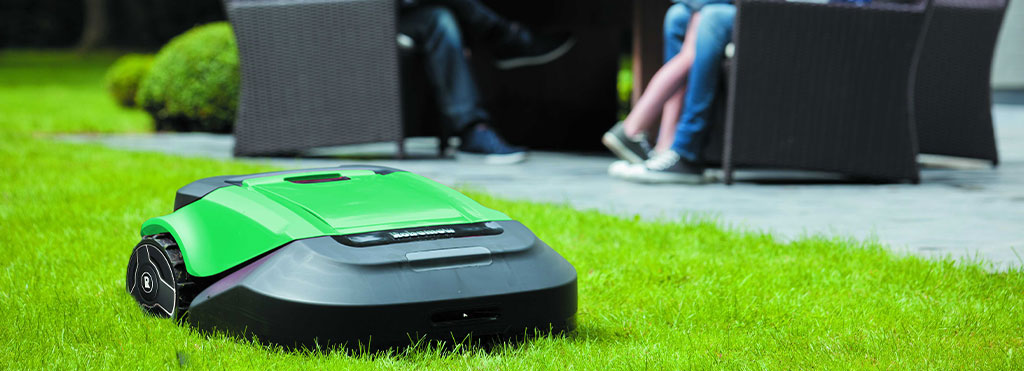
- While traditional mowing is carried out every 15 days or so during the season, requiring the cutting of several centimetres of grass, which must then be removed, the robot lawn mower cuts a few millimetres of the blade of grass, leaving it on the ground. This quickly decomposes and acts as a natural fertiliser for the entire area.
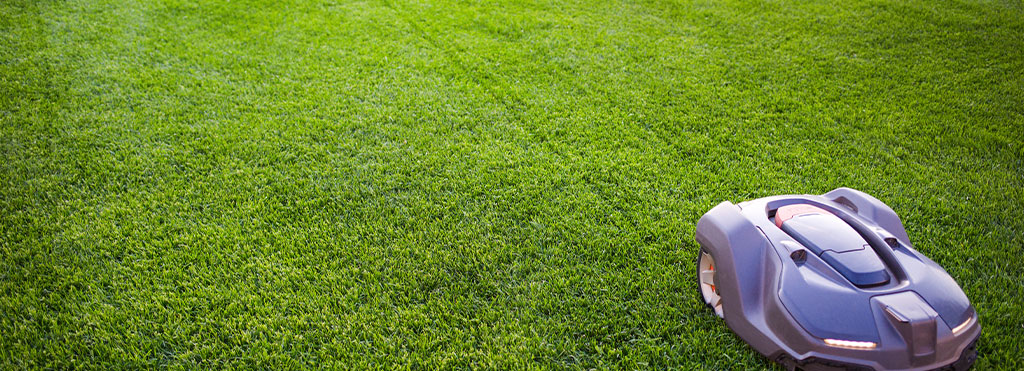
- The algorithms used for random navigation make it possible to mow the entire surface without leaving any uncovered spots, resulting in a perfectly even lawn.
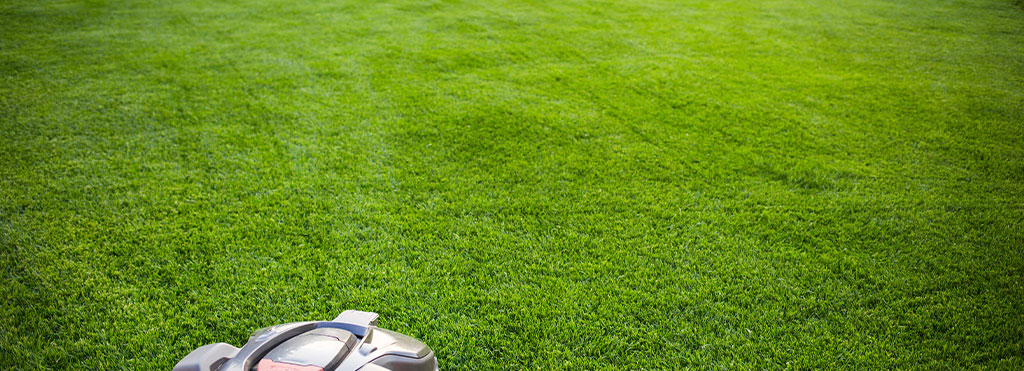
- Other frequently asked questions concern consumption and noise: since it is a battery-powered product these data are both very low; in fact, consumption is very reduced, it is calculated that it can be 1 to 4 compared to a traditional mowing carried out by other gardening equipment (i.e. 2/4-stroke lawn mower or riding-on mower), also without considering that the frequency of cutting is much higher, which means that with a robot lawn mower you get better results at a very low cost.
- It is also important to point out their greening component: unlike 2/4-stroke lawn mowers, they do not pollute at all.
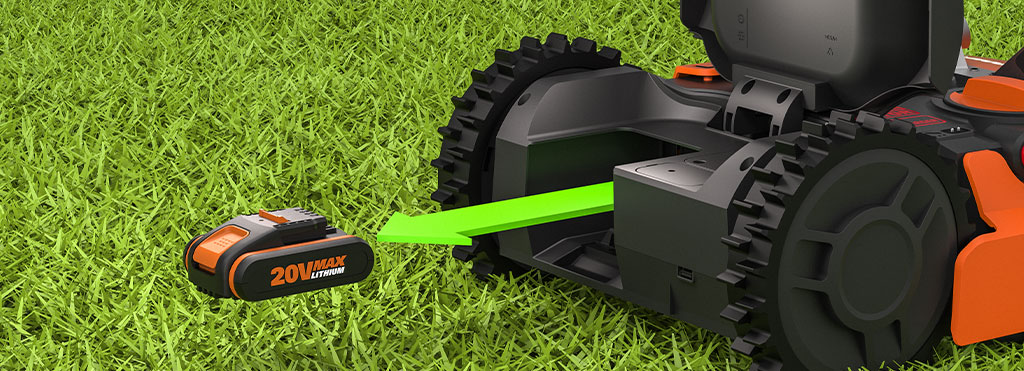
- The electric motor is extremely silent to the point that it can even be programmed for mowing overnight without causing any disturbance to you or your neighbours.

2. Choosing the right robot lawn mower for your needs
Before starting to look at the characteristics based on which it will be possible to choose a model rather than another, it is necessary to make a preliminary remark: the robot lawn mower is a machine designed to work on lawns sown with no unevenness, so before making the purchase it is important to check that the lawn is suitable, and if it is not, it must be made so by eliminating any holes, steps and interruptions. Slopes represent a separate issue (which will be addressed later) as they do not affect the use of the robot but only the choice of the most suitable model.
2.1. Size and shape of the lawn
The first thing to asses is the size of your garden, which is why the recommended working surface is always indicated by the manufacturer as the main selection parameter. There are in fact models for all areas, from small home lawns to large sports fields, where the difference between the machines is dictated by different characteristics of the robot lawn mower such as:
- batteries running time,
- motor type,
- cutting deck,
- installed software,
- algorithms used for navigation.
It is always a good idea to stay above the actual surface area to be cut (for example, if the garden is 800 square metres, it would be better to consider a robot lawn mower with a recommended cutting surface of at least 1000 square metres or even more), so as not to put too much strain on the robot, compromising its lifespan, especially if the area has a particularly elaborate shape or is full of obstacles.

2.2. Slopes
The second thing to evaluate are the slopes, since not all robot lawn mowers are able to overcome significant slopes, so if the garden has a lot of differences in height (up to 45-50%), it is better to move towards a robot lawn mower with 4×4 drive, vice versa, if the area is mostly flat, it is possible to choose a more classic model with two-wheel drive capable of overcoming those small slopes normally present in almost every lawn.
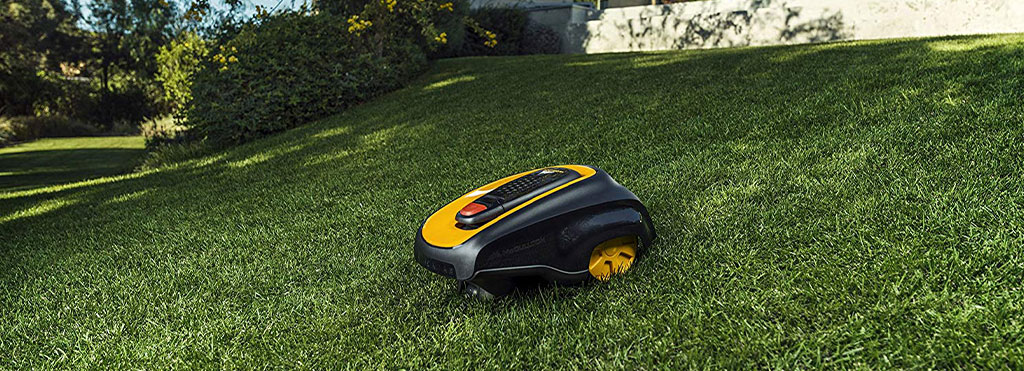
3. Robot lawn mower battery
3.1. Types of batteries
There are different types of rechargeable battery which obviously make the difference between robot lawn mower models.
- The most outdated and cost-effective is the lead-acid battery, commonly used in cars; it is an old generation battery and therefore very heavy, subject to memory effect and long recharging times, which reduces its performance over time and requires recharging when not in use.
- The lithium-ion batteries (Li-Ion), on the other hand, belong to the new generation of batteries, and are the best batteries currently available on the market, used on all portable devices (smartphones, tablets, laptops, etc.). They allow greater autonomy while being much more lightweight, and are also less affected by the memory effect and lose very little charge when not in use. The recharge time is much shorter than the lead-acid ones, but they must be recharged when the robot is not in use. To overcome this, there is an improved version of these batteries (Li-Ion+) which allows them to be charged only once a year without compromising functionality.
Finally, there are lithium polymer (Li-Po) batteries, a variant of the previous ones, which have the advantage of being “bendable”, thus improving the shape, assembly and efficiency of the robot lawn mower. They are also safer in case of damage as the polymers used are less flammable.

Lead-acid battery 
Lithium-ion battery
3.2. Battery life
When we talk about battery life, we must essentially refer to the capacity of the battery. It goes without saying that more capable and powerful batteries make the robot lawn mower more performing and therefore more suitable for larger gardens and still able to guarantee faster lawn mowing.
Linked to the battery issue, there is a further distinction that may be of interest when purchasing a tool for lawn mowing, namely whether it is better to choose an automatic or a semi-automatic robot lawn mower.
- The automatic robot lawn mower is more practical and comfortable as it is totally autonomous. When the battery is low, it returns to the charging station its own and is then able to work again once fully charged. Obviously, it is recommended for larger lawn surfaces.
- In the case of a semi-automatic robot lawn mower, on the other hand, in the event of low battery power, the robot lawn mower must be placed manually on its charging station. This model is certainly more affordable and may be recommended for gardens with separate concrete areas or driveways that would make installation more complex in the case of fully automatic lawn mowers.

Automatic robot lawn mower 
Semi-automatic robot lawn mower
4. Installation and technological equipment
Now that we have a clear idea of the type of robot lawn mower suitable for our requirements, what needs to be understood is which system we want to use and which technologies we are looking for.
4.1. Perimeter wire installation
Most robot lawn mowers work with a perimeter wire and a charging station which must be installed along the edges of the garden and around any obstacles such as trees, flowerbeds, etc. This wire can be placed on the grass using fixing pegs, usually supplied, or by burying it slightly (about 2 cm deep) with manual or electric wire laying machines. As well as enclosing the working surface and any critical areas, the wire guides the robot lawn mower back to the charging station when the battery is low, minimising user intervention. Thanks to this system. when the robot lawn mower is started up for the first time, it will map the perimeter of the working surface using a GPS system, memorising it and improving cutting efficiency.

Installation of the perimeter wire with fixing pegs 
Positioning the wire anti-clockwise around obstacles
4.2. Robot lawn mowers without perimeter wire
As an alternative, there are robot lawn mowers that do not feature any perimeter wire, but instead make use of sensors to detect areas of grass and any obstacles, thus remaining on the working surface independently and eliminating the need for initial installation. However, this system has some disadvantages: when the battery runs out, the robot lawn mower has to be manually brought back to the charging station, time programming is impossible and the cutting surface has to be enclosed by kerbs, walls, hedges or paving stones. There are also models with curb drop-off sensors that block the robot in case of steps or pools, avoiding unpleasant accidents.
4.3. The anti-collision system
It goes without saying that in terms of installation, the more elaborate the perimeter and the more elements there are in the garden, the more demanding the initial preparation will be. To overcome this, the most advanced models, although requiring perimeter wire, are equipped with anti-collision systems, eliminating the need to install the wire around flowerbeds, trees, bushes, etc., thus combining the efficiency of models with perimeter wire with the ease of installation of those without it.
In addition, anti-collision sensors ensure that the robot lawn mower does not collide with people, animals or objects. At the slightest contact, it moves backwards and changes route.

Wiper Robot Lawn Mower without perimeter wire 
Robot lawn mowing path with anti-collision sensors
4.4. Mapping the lawn
- The lawn mapping function allows robot lawn mower not to pass over already mowed lawns. The robot lawn mower is therefore able to recognize the portions of the garden already mowed and those still to be cut. This naturally saves time and makes work more efficient.
- An even more advanced feature is the multi-zone lawn mapping function, which is ideal for green spaces consisting of several “divided” areas. In such cases it will be necessary to program different settings according to the different surfaces to be cut.
- Once the robot lawn mower has memorised the working area, it will only activate the blades when necessary, i.e. when it finds grass to mow.
- Also linked to this is blade locking system: the blades stop if the robot tips over.
5. The cutting deck
Robot lawn mowers generally have a double or triple blade, depending on the model, power and size of the appliance. What is crucial to say is that the robot lawn mower does not simply cut the grass, it chops it up. In addition, it is the operator himself who adjusts the cutting settings, such as height, according to his/her needs.
5.1. Mulching cutting system
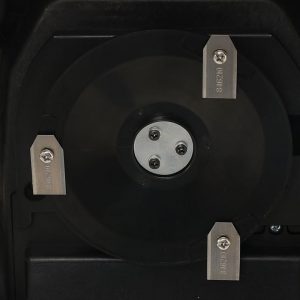
Basically, robot lawn mowers are characterised by the mulching cutting system, with pivoting blades.
But what exactly is mulching cutting? This system guarantees a higher quality cut compared to that achieved with other traditional lawn mower blades. The mulching blades allow to chop and pulverise the grass in fine particles which will then be evenly distributed across the cutting surface.
These small pieces of grass will not float on the freshly mown turf, but will lay directly on the ground, decomposing very quickly. They will act as fertiliser for the new lawn, transforming into nutrients and water (in fact, grass is more than 70% water). This way, the biological cycle of the lawn will be completed. The lawn appearance after mowing, under normal conditions, is practically the same as that achieved through a riding-on mower with grass collector, the advantage being that, with the mulching cutting system there is no need to manually dispose of shredded grass residuals.
5.2. The cut near edges
The cut near edges, or side cutting deck, deserves a special mention. Only some robot lawn mower models can boast this feature. These models are able to cut the grass as close as possible to the edge of the lawn, minimising the need to go through the manual edge trimmer. With the other robot models, the grass at the edge remains and taking care of it is an operation that requires more time and effort for the operator.

Cut near edges 
Worx Landroid Robot Lawn Mower side cutting deck
6. Smart functionalities and safety
- As for the management/programming of the robot lawn mower, most of the electric appliances for lawn mowing available on the market are equipped with Wi-Fi reception. This way, by means of special apps developed by the manufacturers themselves, it will be possible to set up, program or even drive the robot lawn mower, directly from our smartphone or tablet in an immediate and intuitive way. Software updates can also be downloaded periodically through this system, so that the robot lawn mower is always up-to-date and fully functional.
- For models without a remote connection, these operations are possible via displays and buttons located directly on the robot lawn mower.
- Some models (Robomow, for example) can be interfaced with home automation devices such as Alexa, so you will be able to manage cutting and diagnostics with a simple voice control from inside your home or remotely with your smartphone.
- Until now, it was believed that the random cutting path was the best way for robot lawn mowers to cut a lawn. Today we know that this is not the case. The algorithms used in the new models (such as the new Works range) are increasingly efficient as, when arriving at the edge, the robot lawn mower, instead of turning randomly, calculates the best direction and optimises its cutting path. This results in fewer mowing passes and therefore less time needed to complete the cut, reducing wear on the machine and resulting in a more uniform lawn.
- A last but no less important aspect is safety. All robot lawn mowers work in total safety as they are equipped with a lift sensor; in the event of excessive tilting, which would expose the blades, the rotation of the motor is immediately blocked, making it safe even in the presence of animals or children.
- Most robot lawn mowers feature a rain sensor which returns the tool to the charging station in case of bad weather to avoid cutting wet grass.
- Many models come with theft protections such as personal password/PIN and audible alarms in case programming requires the user’s intervention, and in some cases, it is also possible to lock the robot and locate it via GPS in case of theft.

Robot lawn mower management app 
Robot lawn mower display and controls 
Robot lawn mower working in narrow passages

Lift sensor 
Rain sensor 
Theft protection with PIN
7. Cleaning the robot lawn mower
Unlike traditional lawn mower machines, it is not necessary to clean the robot lawn mower after every use. Cleaning the blades and the under shell is nevertheless recommended after a week of continuous work. In addition to the longer washing intervals, we must say that cleaning a robot lawn mower is much simpler; it can be easily turned upside down, due to its light weight and the absence of liquids inside, after which it is sufficient to clean the blades by removing grass residues with a brush or to wash them using a normal water hose. In winter, before a long period of non-use, it is a good idea to give the robot a thorough cleaning.
Due to its small size, it can be easily stored indoors and protected from the weather, together with its charging station. As for the perimeter wire, once buried, it remains in the garden and does not need to be removed due to non-use.

Robot lawn mower cleaning with brush 
Robot lawn mower washing with water hose



